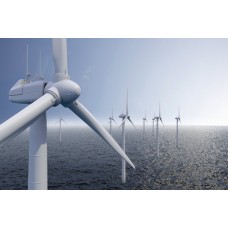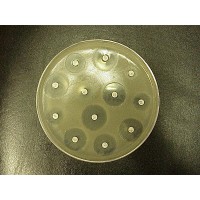Frontis Energy erstellt Markt- und Machbarkeitsstudien im Bereich erneuerbare Energie, Energiespeicherung und Wasserbehandlung. Unser internationales Netzwerk von Beratern ist auf vier Kontinenten aktiv und hat zusammen mehr als 100 Jahre in den Energie- und Wassersektoren.
Unsere Berichte basieren auf wissenschaftliche findierten Grundlagen und tiefen Markteinblicken. Unser Team von Beratern ist ständig auf Abruf und stets informiert über die neuesten Richtlinien.
Erneuerbare Energie
Überraschenderweise ist Solarenergie tatsächlich einer Form der Kernenergie. Unsere Sonne setzt thermische Energie frei, die für das Leben auf der Erde essentiell ist. Diese thermische Energie ist das Ergebnis der Kernfusion des Wasserstoffs im Kern der Sonne. Wenn sich zwei Wasserstoffisotope vereinigen, geben sie ein Heliumatom, ein freiwerdendes Neutron und eine beträchtliche Menge an Strahlungsenergie ab. Während diese Lichtstrahlen zwischen 10.000 und 170.000 Jahren benötigen, um von ihrem Kern aus die Oberfläche der Sonne zu erreichen, benötigen sie nur etwa 8 Minuten, um die Erde zu erreichen, wo sie uns Licht und Wärme und Energie für Sonnenkollektoren liefern.
Solartechnologie wandelt Sonnenlicht in Elektrizität um, entweder direkt mit Photovoltaik (PV) oder indirekt mit Solarthermieanlagen. Solarthermieanlagen verwenden Linsen oder Spiegel, um eine große Fläche von Sonnenlicht in einen kleinen Strahl zu fokussieren. Auf diese Weise wird die Sonnenergie gebündelt und in Wärme umgewandelt. Durch Hinzufügen einer Dampfturbine wird dieser sogenannte Solarthermie in elektrische Energie umgewandelt. Seit 2014 nutzt Spanien mit einer Gesamtkapazität von 2 GW die größten Solarthermieanlage weltweit.
Die Photovoltaik arbeitet unter Ausnutzung des photovoltaischen Effekts, der die Erzeugung von elektrischem Strom in einem photoelektrischen Material nach Belichtung bewirkt. Der photovoltaische Effekt steht in direktem Zusammenhang mit dem photoelektrischen Effekt, ist jedoch nicht mit diesem zu verwechseln. Der photoelektrische Effekt ist das Phänomen, dass Elektronen von einem gegebenen Metall freigesetzt werden, wenn das gegebene Metall Licht ausgesetzt wird. Die Photovoltaik wurde anfangs und auch heute noch genutzt, um kleine und mittelgroße Anwendungen zu betreiben, vom Taschenrechner mit einer einzigen Solarzelle bis hin zu netzfernen Häusern, die von einer Photovoltaikanlage angetrieben werden. Sie sind eine wichtige und relativ kostengünstige Quelle für elektrische Energie, z.B. wenn die Netzleistung unzureichend ist oder die Netzanbindung zu teuer bzw. nicht verfügbar ist.
Energiespeicherung
Der Energiebedarf steigt und der Rohstoff für die Wirtschaft mit fossilen Brennstoffen nimmt ab. Darüber hinaus verschlechtert die Emission von Gasen aus dem Verbrauch fossiler Brennstoffe die Luftqualität erheblich. Die aus diesen fossilen Brennstoffen erzeugten Kohlenstoffnebenprodukte beeinflussen das Klima erheblich. Erneuerbare Energie ist ein Weg aus dem Dilemma, aber man sie nicht speichern. Die Umwandlung in chemische Energie, wie. z.B. Wasserstoff kann das Problem lösen
Es besteht die Notwendigkeit, eine erneuerbare Energiequellen zu
finden, die je nach Anforderung leicht hergestellt, gespeichert und
verwendet werden können. Wasserstoff kann eine vielversprechende
Energieressource sein, da er eine reichlich verfügbare, ungiftige
Ressource ist und leicht zum Speichern überschüssiger elektrischer
Energie verwendet werden kann.
Wasserstoff erzeugt in Kombination mit Sauerstoff in einer Brennstoffzelle Strom und die Nebenprodukte sind Wasser und Wärme. Basierend auf der Methode zur Herstellung von Wasserstoff wird es in blauen Wasserstoff und grünen Wasserstoff eingeteilt. Blauer Wasserstoff wird aus fossilen Brennstoffen wie Methan, Benzin und Kohle hergestellt, während grüner Wasserstoff aus nicht fossilen Brennstoffen / Wasser erzeugt wird. Der sauberste Weg zur Herstellung von umweltfreundlichem Wasserstoff ist die Elektrolyse von Wasser, bei der Wasser elektrolysiert wird, um Wasserstoff und Sauerstoff zu trennen. Erneuerbare Energie kann als Leistungselektrolyseur zur Erzeugung von Wasserstoff aus Wasser verwendet werden. Die solarbetriebene photoelektrochemische Wasserspaltung ist eine der gängigen Methoden. Bei der photoelektrochemischen Wasserspaltung wird Wasserstoff aus Wasser unter Verwendung von Sonnenlicht erzeugt.
Abwasserbehandlung
Aufgabe der Abwassrbehandlung ist es, unerwünschte Inhaltsstoffe aus dem Abwasser zu entfernen und die natürliche Wasserqualität wiederherzustellen. Es handelt sich um den Oberbegriff für die gezielte Veränderung der Abwasserbeschaffenheit (siehe auch DIN 4045). Das ist praktizierter Umweltschutz, weil so keine unerwünschten oder gar schädlichen Stoffe in unsere Umwelt gelangen.
Energie und Wasseraufbereitung sind allerdings eng miteinander verknüpft, da
letztere viel Energie verbraucht. Bei der Abwasserbehandlung ist die
Belüftung ein energieintensives und notwendiges Verfahren zur Entfernung
von Verunreinigungen. Dabei blasen Pumpen Luft in das Abwasser und
versorgen so die im Belebtschlammbecken vorhanden Mikroben mit
Sauerstoff. Diese Bakterien oxidieren im Gegenzug organische Stoffe zu
CO2 und entfernen diese adaurch aus dem Abwasser. Dieses
Verfahren is der indutrielle Standard und hat sich seit über einem
Jahrhundert bewährt. er Energieverbrauch bei der Wasseraufbereitung
produziert weltweit zirka 4-5% des anthropogenen CO2. Zum Vergleich, laut der Air Transport Action Group in Genf produzierte der internationale Luftverkehr Jahr 2019 2,1% CO2.
Die Abwasserbehandlung umfaßt alle Aufbereitungstechniken mit dem Ziel der schadlosen Ableitung, Reinigung, Verwertung, Rückgewinnung von wiederverwendbaren Wertstoffen und der Senkung des Abwasseranfalls. Abwasser wird mechanisch und chemisch vorbehandelt, bevor es durch die biologische Abwasserreinigung von den zersetzlichen Schmutzstoffen durch physikalische, biochemische und biologische Prozesse unter Zufuhr von Luftsauerstoff bei Gegenwart von Mikroben befreit und dem Vorfluter zugeführt werden.
Die mechanische Abwasserbehandlung dient der Abtrennung von Feststoffen; grobe Stoffe werden beispielsweise durch Rechen, Sand im Sandfang, aufschwimmende Stoffe wie Fette und Öle durch sog. Leichtstoffabscheider, sink- und absetzbare Stoffe (oft nach einer Neutralisation) im Vorklärbecken zurückgehalten.
Bei der biologischen Abwasserreinigung wird die Fähigkeit von Mikroorganismen (insbesondere in aeroben Abbauvorgängen) genutzt, organische Substanzen zu metabolisieren. Dieser Prozess ist der natürlichen Selbstreinigung der Oberflächenge-wässer nachgeahmt, wobei das Verfahren durch die Konzentrationserhöhung an Bakterien usw. und durch die Sauerstoffzuführung in Form von Luft in den biologischen Kläranlagen wesentlich beschleunigt wird.
Die biologische Abwasserbehandlung wurde notwendig, um die Vorfluter nicht durch übermäßigen Sauerstoffverbrauch zu belasten.
Bei der chemischen Abwasserbehandlung wird z.B. durch Zugabe von Kalk oder Natronlauge das Abwasser neutralisiert, wobei Kolloide und Salze ausfallen können. Den physikalisch-chemischen Abwasserbehandlungs-Methoden werden je nach Systematik z.B. Flotation, Ionenaustauscher, Membranverfahren und andere Verfahren zugerechnet.
Unser Angebot
Unsere Studien basieren auf den neuesten Erkenntnissen vom Markt und aus der Wissenschaft. Ein qualifiziertes Team von Experten, nach Wunsch aus Ihrer Region liefert Ihnen maßgeschneiderte Studien die Ihre spezifischen Fragen beantworten.
Markt- und Machbarkeitsstudien
- Hersteller Frontis Energy
- Artikelnr. FE010752
- Verfügbarkeit Lagernd
-
0,00€
- Netto 0,00€
Ähnliche Produkte
Chemische Umweltanalytik − Avantise
Zusammen mit unseren Kollegen von Avantise bieten wir verschiedene Umweltanaylsen an. Diese umfassen..
0,00€ Netto 0,00€
Mikrobiologische Beratung
Die mikrobiologische Beratung bei Frontis umfaßt alle Themenbereiche der Mikrobiologie. Dazu gehören..
0,00€ Netto 0,00€
Schnellsuche Marktstudie, Machbarkeitsstudie, erneuerbare Energie, Energiespeicherung, Abwasserbehandlung







